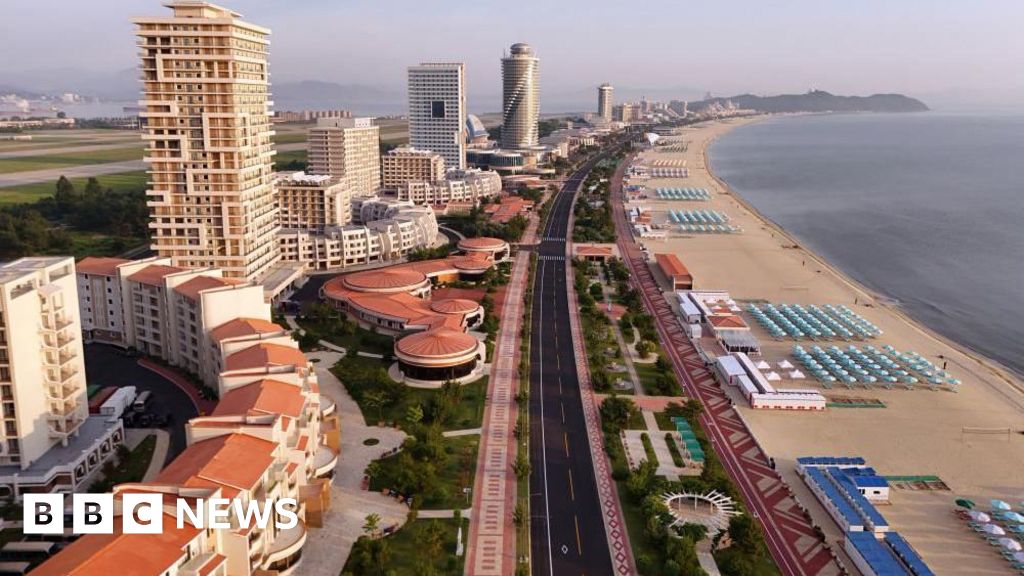North Korea is set to unveil a new beach resort that leader Kim Jong Un is optimistic will enhance tourism within the secretive nation, according to state media reports. The Wonsan Kalma Coastal Tourist Zone, located on the eastern coast, is scheduled to open for domestic visitors on July 1, six years behind its original completion timeline. It remains uncertain when the resort will be accessible to international travelers.
Kim, who spent part of his childhood in the affluent area of Wonsan, where many elite North Koreans have private residences, aims to revitalize the town that previously housed a missile testing site. Official reports from the Korean Central News Agency (KCNA) indicate that the resort will have the capacity to accommodate 20,000 visitors across a 4-kilometer (2.5 miles) stretch of beach, featuring hotels, restaurants, shopping centers, and a water park, though these claims have not been independently verified.
North Korea has faced heavy sanctions for decades due to its nuclear weapons program and is regarded as one of the poorest nations globally. The government allocates a significant portion of its budget to the military and to constructing monuments and landmarks, especially in Pyongyang, that bolster the regime’s image and the cult of personality surrounding the Kim family, which has ruled since 1948. Observers suggest that promoting tourism could be a straightforward way for Pyongyang to generate revenue.
Although some foreign tourists are permitted, most tour groups are typically composed of visitors from China and Russia—countries with enduring diplomatic ties to North Korea. “I was hoping this might signal a broader reopening to international tourism, but unfortunately, that doesn’t seem to be the case for now,” said Rowan Beard, co-founder of Young Pioneer Tours, in an interview with the BBC.
Tourism has drastically declined since the onset of the Covid pandemic, with the nation closing its borders in early 2020. North Korea began slowly lifting restrictions in mid-2023, allowing Russian tourists to enter one year later, and opened up to more Western tourists in February, admitting visitors from the UK, France, Germany, and Australia who crossed from China. However, tourism was abruptly suspended weeks later without any explanation.

